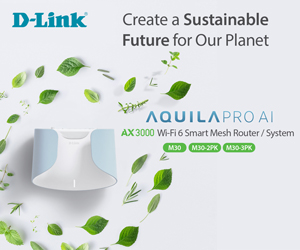Rooftop solar Part 4 is about the results six months after install of my 10 kW solar and matching 10 kWh battery. What is the payback, and would I have done anything differently?
If you are contemplating rooftop solar, read Rooftop Solar Parts 1, 2, and 3 first. And I remind you that this is my experience and may not be the same as your experience. But some golden rules can improve your experience.
#1 Have the right roof
It is #1 because it’s the most critical thing to maximise solar. The right roof allows for the maximum number of panels at the correct pitch (your latitude °) to get the morning and afternoon sun.
In general (based on Sydney 33° latitude), the roof orientation should be roughly east/west with north and south-facing panels. You can click on these images for an enlargement. Light blue is best, and solar production drops off as it gets darker blue.
We opted for 10 panels facing north and 14 panels facing south, as that was all our roof design would accommodate. We were fully prepared to accept lesser performance in Winter.










If you are going to build, make sure your architect starts with the best roof for solar and plans a home around that. While you are at it, look at BIPV (Building Integrated Photovoltaics), which are solar panels that actually replace the roof cladding and can be highly economical.
- Do not accept panels on all four aspects.
- Do not lay them on flat roofs without a frame to get the correct pitch.
- Make sure trees or homes do not shade them.
- Do not believe a salespeople who tell you otherwise.

#2 Work out your base load
Take some time to determine how much power you need to run your home during the day and night. You can find basic information in your electricity bill, either on the paper bill or online. Set up an Excel spreadsheet to help make sense of this. For us, it was about:
- 500 watts per hour (Wh) during the day, covering fridge, internet, two laptops and a TV
- 1000 Wh peak (sunset to 10 PM) covering essential lighting, cooking and TV
- 500 Wh until sunup when solar kicks in
However, in summer, the ducted A/C consumed 3000+ Wh, while various cooking appliances used up to 2000 Wh (including ovens and air fryers). In winter, a Dyson fan heater consumes 2300 Wh, while ducted A/C heating uses about 4000 Wh. Add in a dishwasher, washing machine and dryer, and, well, you get my drift!
And if you have a battery, it will add an extra 10 kW to fill it on rainy days, hopefully using lower-cost, off-peak rates at night.
Fortunately, I had Emberpulse energy use metering installed to tell me about the base load.


#3 Use a professional
Sports and celebrity-backed companies with massive advertising budgets are nothing more than sales organisations that use local subcontractors. They will say anything to get a sale. My neighbours are next to a heavily tree area and their roof is in shade from about 2 PM.
Our professional was able to explain the various technologies and ensured that we got the best system to meet our needs.

#4 Cheap or good – they are mutually exclusive
We called for quotes for a 10kW roof mounted solar panels and 10kW battery (we specified what we wanted), and the responses were from $15,000 to over $40,000
Said sports and celebrity-backed companies quoted about $15,000 for our system and offered all manner of deals to sign today. They ignored our written request for marine environment-rated panels, eschewed micro-inverters, and our request for a Lithium Iron Phosphate (LiFePO4) battery. Instead, they told us a 6 KW system with a Lithium-ion battery would suffice, despite evidence provided stating a 10 kW system was necessary. The incessant calls and follow-ups were unpleasant.
We chose the top-of-the-range quote because we wanted BIPV panels, and the professionals broke it all down (see Rooftop Solar Part 3). As we were saving $10,000 on the roof cladding, it was fair.
#5 Use Micro-inverters
AC Micro-inverters from Enphase allow each panel to perform independently to its maximum output. DC String inverters only perform as well as their lowest output panel.
The Enphase microinverter is 97% efficient in converting DC from the panels to AC. String inverter DC to AC efficiency is between 80-90% at best.
We get nearly twice the daily output as our neighbour with a similar capacity string inverter system.

#6 Battery or not
Batteries are expensive, but they allow you to counter blackouts and should provide enough power during the night. If you are a low-energy user, a battery will never make economic sense. If you are more concerned about self-sufficiency, then a battery should be treated in the same manner as you choose premium finishes for your home – a luxury over price decision.
A battery is just a fuel tank. A 10 KWh battery after DC/AC conversion will provide 7000 to 7500 watts for an hour. This is a lossy process, as DC to AC inversion typically results in a loss of about 30%. Most batteries have a depth of discharge of 20-80% or 60%, which further reduces the energy.
Our Enphase LiFePo4 10kW DC battery nets 7.6 kWh with a 90% depth of discharge and is just enough to get us through the night unless we go overboard on heating or cooling.
Rooftop Solar Part 4: Energy costs
We now have six months (28 weeks and 196 days including July), covering most of summer, autumn and winter, or at least enough to extrapolate.
The table below shows:
| MWh | kWh | Wh | Average per week Wh | Average per day kWh | |
| Produced | 5.6 | 5,600 | 5,600,000 | 200,000 | 29 |
| Used | 3.7 | 3,700 | 3,700,000 | 132,143 | 19 |
| Exported to grid | 2.5 ($125 CR Feed-in tariff) | 2,500 | 2,500,000 | 89,286 | 12.78 |
| Energy Australia Reading | 2.38 ($117) | ||||
| Imported | .922 | 922 | 922,000 | 32,929 | 4.7 |
| Energy Australia Reading | 1.066 |
There is a minor disparity between our Enphase readings and Energy Australia. From what we can ascertain, it is about power line transmission efficiency, and it is not worth worrying over a kWh or so over six months.
So, while we produced more than enough for our use, it was not always when we needed it or during rain or overcast conditions, hence importing 25% of our energy needs (much at peak rates).
Actual retailer energy cost
There are two main parts to electricity bills.
- A fixed daily supply use charge
- A tariff, be it demand, fixed or Time-of-Use (ToU)
One would assume that it is best to get a lower daily charge, as feed-in tariffs are insignificant, but the reality is that we have had to rely on the grid for 25% of our power (ranging from 10% when sunny to 61% when rainy in May.
And a lower daily supply charge usually means higher energy charges or a lower feed-in tariff.
Electricity charges rose considerably in July 2025, and the ToU tariff (off-peak, shoulder, peak) went to approx. 30/37/71 cents and daily supply from $1.00 to $1.23.
Historically, our energy use charges have risen 49% in the past four years and won’t be slowing down.
2025 with solar – Six-month use $523 (12-month estimate $1000)
- 15 March 14 June $80.75 (after $75 rebate)
- 15 December to 14 March $292.94 (after $75 rebate)
2024 on grid – Annual use $3351
- 14 December to 13 March $1083,43 (no rebate)
- 14 March to 13 June 732.31 (no rebate)
- 14 June to 13 September $793.29 (after $75 rebate)
- 14 September to 14 December $592.64 (after $75 rebate)
Bloody meerkats
One thing is for sure: Meerkats, Finder, et al. are hopeless at finding you a better energy deal, especially if you use solar. When you use these sites, you must enter your name, email and phone number. Spamming and cold calling will start within an hour! Read Compare the Market – Meerkats are clever marketing, but that’s all (safety).
Remember that our estimate is $1,000 electricity bill for a whole year.
Comparison websites showed Energy Australia (after discounts) at $2310, with the cheapest plan at $1740. Many of the recommended plans were ToU Transitional, which means moving to the Demand Tariff.
Then, in the small print, you will notice that all calculations are on 3.9 MWh a year. Even a small home is likely to use at least twice that.
The Australian Government has Energy Made Easy, where you enter your NMI meter number, and it should calculate the plan costs based on your actual use.
It is no longer accurate for solar users.
Why rooftop solar production varies so much
We have had a lot of rain, with 1072.2mm (2024 total 1525mm) and 103 rainy days (out of 196), or 53% of the time, it was not ideal to produce solar energy.

The sun rises earlier and sets later in summer (Summer Solstice) and the reverse in Winter (Winter Solstice). The issue is that rooftop solar efficiency depends on where you live, and the Bureau of Meteorology website can give you statistics that are useful in working out your grid reliance.
Be aware that most ‘shonks’ now quote ‘up to 40kWh’ production from a 10 kW system to avoid ACCC action over misleading a customer. As you can see, we get way more – up to 62 kWh with the right roof and AC microinverters.
The table below shows the best and worst in each month.
| Month Best/Worst | Production kWh | Use kWh | Imported kWh | Exported kWh |
| Jan | 62/7 | 16.4/19.4 | .6 /13.9 | 44.4/0 |
| Feb | 58.4/9.8 | 22.4/17.3 | .6/12.6 | 35.3/1 |
| March | 48.6/7.6 | 19/17 | 1.8/11.9 | 28.6/0 |
| April | 38.6/3.9 | 17.6/15.5 | .6/10.4 | 20.4/0 |
| May | 26.6/6.2 | 14/21.3 | 1.3/17.5 | 10.8/.3 |
| June | 22.1/12.2 | 16.5/15.7 | 3.9/11.7 | 14.6/6.3 |
Unfortunately, most imported energy is at peak rates. However, if you’re solar savvy, you can use energy hogs and recharge batteries overnight at off-peak rates.
How to interpret the tables.
On the left is a maximum production day, and on the right is a low production day. Light blue is energy produced. Green indicates battery charge or discharge, and black indicates energy export or purchase. Orange (below the baseline) is the energy used.












Was it worth it, dollar-wise?
My solar system utilised the best: 24 x 405W Viridian BIPV panels, 24 Enphase AC micro-inverters, 2 x 5 kWh AC Enphase batteries and a controller. Additionally, I had to rebuild the roof to convert it from a hip to a gable style to accommodate 24 x 405W panels, which is a significant increase from about 10 panels as a hip roof. The roof cladding needed to be replaced (as we live beside the sea and it had rusted in 10 years), so in effect, I would have had to buy $10,000 for roof cladding that the BIPV system replaced. And that means if you are building a new home, you need to look seriously at BIPV.


So, Apples with Apples comparisons are difficult.
Based on six months of data and a $30,000 system, our payback is 13 years. However, most 10kW systems, including a battery, are about $20,000, and payback is about 8.7 years.
If power prices continue to rise at 10-20% a year, a typical system will see a 5 to 6-year payback.
Other factors affecting payback: Warranty and use.
Our Viridian panels are warranted for 10 years to have at least 90% remaining capacity and 25 years for 80% capacity.
With our 15-year battery warranty (6000 cycles), we’ve used 134 in 196 days. This means we’ll use the cycle count in about 22.4 years.
The micro-inverters have a 25-year warranty, unlike string inverters that typically have 5-10-year warranties and often require replacement.
We have survived three blackouts, some for several hours. Yet we were blissfully unaware and got on with living.
Was it worth it, emotionally?
Hell yes. We can thumb our noses (show contempt, disrespect, or defiance) at energy retailers and their incessant gouging. That is the best feeling ever.

It has made us far more energy aware. That started a few years ago by changing all the home’s lights to LED and getting rid of high-energy use fridges, etc.
We have a power-hungry cooling/heating ducted inverter A/C that uses up to 4 kWh, which we now reserve for hot summer days when we are making lots of electricity.
We installed an energy-efficient Daikin Zena split system in the bedroom for hot nights. It uses less than $1 per night.
We have learned that a single Dyson fan heater chews up to 2.3 kWh (heat mode) – no more prolonged use for these or oil, or column heaters. It is easier to heat the person than the space, so we use heated throws, electric blankets, and STOOV pillows that use minimal watts.
The dishwasher goes on at 10 PM before bed, and we use the washing machine and dryer when the battery can handle it or at off-peak times.
If you analyse the green battery charge/discharge lines, you will see that in fine weather it gets us from sunset to sunup with about a 3-hour recharge. If the weather looks like more rain, we top up off-peak for about $2.50.
While we don’t have an EV, in six months we exported 2.6 MWh (2,600 kWh) for a lousy $130 feed-in-tariff. In theory, a typical 50-100 kWh EV could have been recharged from 26 to 52 times in that period, covering up to 26,000 kilometres of range. (Hyundai Kona 50 kW battery can get up to 500 km per charge – see EV database).
And we saved the planet 4.2 tonnes of CO2 in six months.
Rooftop solar Part 4, Rooftop solar Part 4, Rooftop solar Part 4, Rooftop solar Part 4, Rooftop solar Part 4









5 comments
GB
If anyone is thinking solar my advice, also pointed out about is that make sure you get micro invertors.
Ray Shaw
I could not agree more. Another reader had recently experienced hail damage to one panel (on a string inverter) and was told she had to replace all panels, as that type of panel was no longer available. We advised her to contact an Enphase-accredited installer, and now he has put microinverters on all panels and a new single panel for far less than the original repair quote.
Tony Pearce
Congratulations fabulous honest and wonderfully detailed analysis
Rick Archer
Hi Ray ,
You say that energy made easy is not relevant to solar users . How do you choose a retailer then ? We’ve just had an increase from AGL with a reduction in feedback tariffs . Some retailers give zero feedback tariff
Ray Shaw
My comment was that the energy made easy assumes 3900 MWh per year, day, and that is about 10 kWh per day. Most solar homes use double that, so the math is wrong. All I can say is that I set up an Excel spreadsheet with my use and then cost several offerings. The recommended offerings were among the dearest. Feed-in tarrif is a joke and at best worth a couple of hundred dollars a year. I found that those with lower energy costs outperform those with higher daily supply charges.